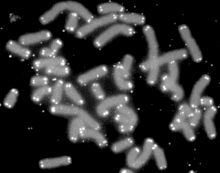The Fountain of Eternal Life in Cleveland, Ohio is described as symbolizing "Man rising above death, reaching upward to God and toward Peace."
Immortality is eternal life, being exempt from death; unending existence. Some modern species may possess biological immortality.
Certain scientists, futurists,
and philosophers have theorized about the immortality of the human
body, with some suggesting that human immortality may be achievable in
the first few decades of the 21st century. Other advocates believe that life extension
is a more achievable goal in the short term, with immortality awaiting
further research breakthroughs. The absence of aging would provide
humans with biological immortality, but not invulnerability to death by
disease or physical trauma; although mind uploading
could solve that if it proved possible. Whether the process of internal
endoimmortality is delivered within the upcoming years depends chiefly
on research (and in neuron research in the case of endoimmortality
through an immortalized cell line) in the former view and perhaps is an
awaited goal in the latter case.
In religious contexts, immortality is often stated to be one of the promises of God (or other deities) to human beings who show goodness or else follow divine law. What form an unending human life would take, or whether an immaterial soul exists and possesses immortality, has been a major point of focus of religion, as well as the subject of speculation and debate.
Definitions
Scientific
Life extension technologies promise a path to complete rejuvenation. Cryonics
holds out the hope that the dead can be revived in the future,
following sufficient medical advancements. While, as shown with
creatures such as hydra and planarian worms, it is indeed possible for a creature to be biologically immortal, it is not known if it is possible for humans.
Mind uploading
is the transference of brain states from a human brain to an
alternative medium providing similar functionality. Assuming the process
to be possible and repeatable, this would provide immortality to the
computation of the original brain, as predicted by futurists such as Ray Kurzweil.
Physical immortality
Physical
immortality is a state of life that allows a person to avoid death and
maintain conscious thought. It can mean the unending existence of a
person from a physical source other than organic life, such as a
computer. Active pursuit of physical immortality can either be based on
scientific trends, such as cryonics, digital immortality, breakthroughs in rejuvenation or predictions of an impending technological singularity, or because of a spiritual belief, such as those held by Rastafarians or Rebirthers.
Causes of death
There are three main causes of death: aging, disease and physical trauma.
Such issues can be resolved with the solutions provided in research to
any end providing such alternate theories at present that require
unification.
Aging
Aubrey de Grey, a leading researcher in the field, defines aging as "a collection of cumulative changes to the molecular and cellular structure of an adult organism, which result in essential metabolic processes, but which also, once they progress far enough, increasingly disrupt metabolism, resulting in pathology and death." The current causes of aging in humans are cell loss (without replacement), DNA damage, oncogenic nuclear mutations and epimutations, cell senescence, mitochondrial mutations, lysosomal aggregates, extracellular aggregates, random extracellular cross-linking, immune system decline, and endocrine changes. Eliminating aging would require finding a solution to each of these causes, a program de Grey calls engineered negligible senescence. There is also a huge body of knowledge indicating that change is characterized by the loss of molecular fidelity.
Disease
Disease is theoretically surmountable via technology.
In short, it is an abnormal condition affecting the body of an
organism, something the body shouldn't typically have to deal with its
natural make up. Human understanding of genetics
is leading to cures and treatments for a myriad of previously incurable
diseases. The mechanisms by which other diseases do damage are becoming
better understood. Sophisticated methods of detecting diseases early
are being developed. Preventative medicine is becoming better understood. Neurodegenerative diseases like Parkinson's and Alzheimer's may soon be curable with the use of stem cells. Breakthroughs in cell biology and telomere research are leading to treatments for cancer. Vaccines are being researched for AIDS and tuberculosis. Genes associated with type 1 diabetes
and certain types of cancer have been discovered, allowing for new
therapies to be developed. Artificial devices attached directly to the nervous system may restore sight to the blind. Drugs are being developed to treat a myriad of other diseases and ailments.
Trauma
Physical trauma
would remain as a threat to perpetual physical life, as an otherwise
immortal person would still be subject to unforeseen accidents or
catastrophes. The speed and quality of paramedic response remains a determining factor in surviving severe trauma. A body that could automatically repair itself from severe trauma, such as speculated uses for nanotechnology, would mitigate this factor.
Being the seat of consciousness, the brain
cannot be risked to trauma if a continuous physical life is to be
maintained. This aversion to trauma risk to the brain would naturally
result in significant behavioral changes that would render physical
immortality undesirable for some people.
Environmental change
Organisms
otherwise unaffected by these causes of death would still face the
problem of obtaining sustenance (whether from currently available
agricultural processes or from hypothetical future technological
processes) in the face of changing availability of suitable resources as
environmental conditions change. After avoiding aging, disease, and
trauma, you could still starve to death.
If there is no limitation on the degree of gradual mitigation of risk then it is possible that the cumulative probability of death over an infinite horizon is less than certainty, even when the risk of fatal trauma in any finite period is greater than zero. Mathematically, this is an aspect of achieving "actuarial escape velocity"
Biological immortality
Human chromosomes (grey) capped by telomeres (white)
Biological immortality is an absence of aging. Specifically it is the absence of a sustained increase in rate of mortality
as a function of chronological age. A cell or organism that does not
experience aging, or ceases to age at some point, is biologically
immortal.
Biologists have chosen the word "immortal" to designate cells that are not limited by the Hayflick limit, where cells no longer divide because of DNA damage or shortened telomeres. The first and still most widely used immortal cell line is HeLa, developed from cells taken from the malignant cervical tumor of Henrietta Lacks without her consent in 1951. Prior to the 1961 work of Leonard Hayflick, there was the erroneous belief fostered by Alexis Carrel that all normal somatic
cells are immortal. By preventing cells from reaching senescence one
can achieve biological immortality; telomeres, a "cap" at the end of
DNA, are thought to be the cause of cell aging. Every time a cell
divides the telomere becomes a bit shorter; when it is finally worn
down, the cell is unable to split and dies. Telomerase
is an enzyme which rebuilds the telomeres in stem cells and cancer
cells, allowing them to replicate an infinite number of times.
No definitive work has yet demonstrated that telomerase can be used in
human somatic cells to prevent healthy tissues from aging. On the other
hand, scientists hope to be able to grow organs with the help of stem
cells, allowing organ transplants without the risk of rejection, another
step in extending human life expectancy. These technologies are the
subject of ongoing research, and are not yet realized.
Biologically immortal species
Life defined as biologically immortal is still susceptible to causes of death besides aging, including disease and trauma, as defined above. Notable immortal species include:
- Bacteria – Bacteria reproduce through binary fission. A parent bacterium splits itself into two identical daughter cells which eventually then split themselves in half. This process repeats, thus making the bacterium essentially immortal. A 2005 PLoS Biology paper suggests that after each division the daughter cells can be identified as the older and the younger, and the older is slightly smaller, weaker, and more likely to die than the younger.
- Turritopsis dohrnii, a jellyfish (phylum Cnidaria, class Hydrozoa, order Anthoathecata), after becoming a sexually mature adult, can transform itself back into a polyp using the cell conversion process of transdifferentiation. Turritopsis dohrnii repeats this cycle, meaning that it may have an indefinite lifespan. Its immortal adaptation has allowed it to spread from its original habitat in the Caribbean to "all over the world".
- Hydra is a genus belonging to the phylum Cnidaria, the class Hydrozoa and the order Anthomedusae. They are simple fresh-water predatory animals possessing radial symmetry.
- Bristlecone pines are speculated to be potentially immortal; the oldest known living specimen is over 5,000 years old.
Evolution of aging
As the existence of biologically immortal species demonstrates, there is no thermodynamic necessity for senescence: a defining feature of life is that it takes in free energy from the environment and unloads its entropy
as waste. Living systems can even build themselves up from seed, and
routinely repair themselves. Aging is therefore presumed to be a
byproduct of evolution,
but why mortality should be selected for remains a subject of research
and debate. Programmed cell death and the telomere "end replication
problem" are found even in the earliest and simplest of organisms. This may be a tradeoff between selecting for cancer and selecting for aging.
Modern theories on the evolution of aging include the following:
- Mutation accumulation is a theory formulated by Peter Medawar in 1952 to explain how evolution would select for aging. Essentially, aging is never selected against, as organisms have offspring before the mortal mutations surface in an individual.
- Antagonistic pleiotropy is a theory proposed as an alternative by George C. Williams, a critic of Medawar, in 1957. In antagonistic pleiotropy, genes carry effects that are both beneficial and detrimental. In essence this refers to genes that offer benefits early in life, but exact a cost later on, i.e. decline and death.
- The disposable soma theory was proposed in 1977 by Thomas Kirkwood,
which states that an individual body must allocate energy for
metabolism, reproduction, and maintenance, and must compromise when
there is food scarcity. Compromise in allocating energy to the repair
function is what causes the body gradually to deteriorate with age,
according to Kirkwood.
Prospects for human biological immortality
Life-extending substances
Some scientists believe that boosting the amount or proportion of telomerase in the body, a naturally forming enzyme that helps maintain the protective caps at the ends of chromosomes,
could prevent cells from dying and so may ultimately lead to extended,
healthier lifespans. A team of researchers at the Spanish National
Cancer Centre (Madrid) tested the hypothesis on mice. It was found that those mice which were genetically engineered to produce 10 times the normal levels of telomerase lived 50% longer than normal mice.
In normal circumstances, without the presence of telomerase, if a
cell divides repeatedly, at some point all the progeny will reach their
Hayflick limit. With the presence of telomerase, each dividing cell can replace the lost bit of DNA,
and any single cell can then divide unbounded. While this unbounded
growth property has excited many researchers, caution is warranted in
exploiting this property, as exactly this same unbounded growth is a
crucial step in enabling cancerous growth. If an organism can replicate
its body cells faster, then it would theoretically stop aging.
Embryonic stem cells
express telomerase, which allows them to divide repeatedly and form the
individual. In adults, telomerase is highly expressed in cells that
need to divide regularly (e.g., in the immune system), whereas most somatic cells express it only at very low levels in a cell-cycle dependent manner.
Technological immortality, biological machines, and "swallowing the doctor"
Technological immortality is the prospect for much longer life spans
made possible by scientific advances in a variety of fields:
nanotechnology, emergency room procedures, genetics, biological engineering, regenerative medicine, microbiology,
and others. Contemporary life spans in the advanced industrial
societies are already markedly longer than those of the past because of
better nutrition, availability of health care, standard of living and
bio-medical scientific advances. Technological immortality predicts
further progress for the same reasons over the near term. An important
aspect of current scientific thinking about immortality is that some
combination of human cloning, cryonics or nanotechnology will play an essential role in extreme life extension. Robert Freitas, a nanorobotics theorist, suggests tiny medical nanorobots could be created to go through human bloodstreams, find dangerous things like cancer cells and bacteria, and destroy them.
Freitas anticipates that gene-therapies and nanotechnology will
eventually make the human body effectively self-sustainable and capable
of living indefinitely in empty space, short of severe brain trauma.
This supports the theory that we will be able to continually create
biological or synthetic replacement parts to replace damaged or dying
ones. Future advances in nanomedicine could give rise to life extension through the repair of many processes thought to be responsible for aging. K. Eric Drexler, one of the founders of nanotechnology, postulated cell repair devices, including ones operating within cells and utilizing as yet hypothetical biological machines, in his 1986 book Engines of Creation. Raymond Kurzweil, a futurist and transhumanist, stated in his book The Singularity Is Near that he believes that advanced medical nanorobotics could completely remedy the effects of aging by 2030. According to Richard Feynman, it was his former graduate student and collaborator Albert Hibbs who originally suggested to him (circa 1959) the idea of a medical use for Feynman's theoretical micromachines.
Hibbs suggested that certain repair machines might one day be reduced
in size to the point that it would, in theory, be possible to (as
Feynman put it) "swallow the doctor". The idea was incorporated into Feynman's 1959 essay There's Plenty of Room at the Bottom.
Cryonics
Cryonics,
the practice of preserving organisms (either intact specimens or only
their brains) for possible future revival by storing them at cryogenic
temperatures where metabolism and decay are almost completely stopped,
can be used to 'pause' for those who believe that life extension
technologies will not develop sufficiently within their lifetime.
Ideally, cryonics would allow clinically dead people to be brought back
in the future after cures to the patients' diseases have been discovered
and aging is reversible. Modern cryonics procedures use a process called vitrification which creates a glass-like state rather than freezing
as the body is brought to low temperatures. This process reduces the
risk of ice crystals damaging the cell-structure, which would be
especially detrimental to cell structures in the brain, as their minute
adjustment evokes the individual's mind.
Mind-to-computer uploading
One idea that has been advanced involves uploading an individual's habits and memories via direct mind-computer interface. The individual's memory may be loaded to a computer or to a new organic body. Extropian futurists like Moravec and Kurzweil have proposed that, thanks to exponentially growing computing power, it will someday be possible to upload human consciousness
onto a computer system, and exist indefinitely in a virtual
environment. This could be accomplished via advanced cybernetics, where
computer hardware would initially be installed in the brain to help sort
memory or accelerate thought processes. Components would be added
gradually until the person's entire brain functions were handled by
artificial devices, avoiding sharp transitions that would lead to issues
of identity,
thus running the risk of the person to be declared dead and thus not be
a legitimate owner of his or her property. After this point, the human
body could be treated as an optional accessory and the program
implementing the person could be transferred to any sufficiently
powerful computer. Another possible mechanism for mind upload is to
perform a detailed scan of an individual's original, organic brain and
simulate the entire structure in a computer. What level of detail such
scans and simulations would need to achieve to emulate awareness, and
whether the scanning process would destroy the brain, is still to be
determined.
It is suggested that achieving immortality through this mechanism would
require specific consideration to be given to the role of consciousness in the functions of the mind.
An uploaded mind would only be a copy of the original mind, and not the
conscious mind of the living entity associated in such a transfer.
Without a simultaneous upload of consciousness, the original living
entity remains mortal, thus not achieving true immortality. Research on neural correlates of consciousness
is yet inconclusive on this issue. Whatever the route to mind upload,
persons in this state could then be considered essentially immortal,
short of loss or traumatic destruction of the machines that maintained
them.
Cybernetics
Transforming a human into a cyborg can include brain implants
or extracting a human processing unit and placing it in a robotic
life-support system. Even replacing biological organs with robotic ones
could increase life span (e.g. pace makers) and depending on the
definition, many technological upgrades to the body, like genetic
modifications or the addition of nanobots would qualify an individual as
a cyborg. Some people believe that such modifications would make one
impervious to aging and disease and theoretically immortal unless killed
or destroyed.


















